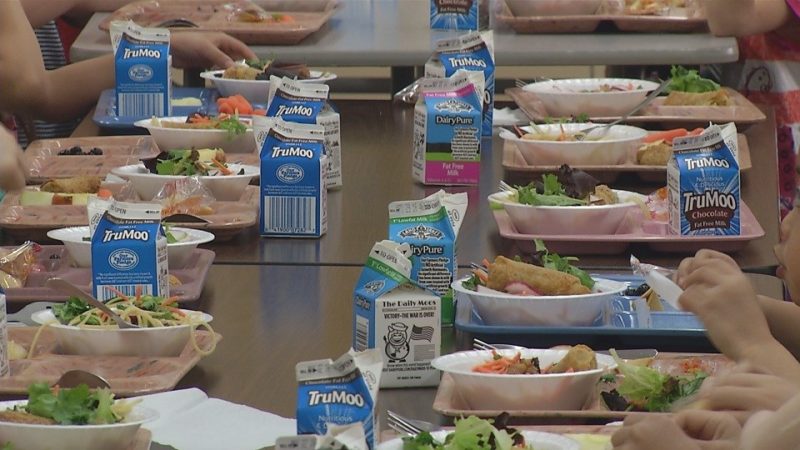
Share On Social!
This is part of our Healthier Schools & Latino Kids: A Research Review »
Future Research Needs
To effectively address the issue of overweight and obesity among Latino children and adolescents, additional research is needed to better discern the impact of the school food environment on Latino weight status.
Future studies should directly address the question of whether reducing access to competitive foods has long-term positive effects on BMI among Latino students.
Additional studies should more firmly establish the contribution of competitive foods to Latino students’ food choices and consumption patterns, as well as the extent to which the surrounding food environment in Latino communities contributes to overall dietary habits of Latino children and adolescents.
Evaluation of efforts intended to enhance the school food environment will help identify areas with the greatest potential for further intervention. Additionally, most studies identified by this review were cross-sectional by design; more experimental studies on these topics are warranted.
Now that schools participating in the National School Lunch Program and School Breakfast Program are required to meet nutrition standards for competitive foods as well, future research should focus on the effects of this change on overweight and obesity among Latino children and adolescents.
In addition, each school participating in the NSLP or SBP must implement a local school wellness policy as mandated by the Child Nutrition and WIC Reauthorization Act of 2004 and the HHFK Act of 2010; the wellness policy should include both nutrition and physical activity components. Current studies of local wellness policy show that, in general, schools are more compliant with the nutrition component than the physical activity component.
To increase opportunities for physical activity among Latino children, further research is needed to identify the factors that may support or interfere with physical activity.
Studies should focus on determining the specific effects of family income, socioeconomic status, availability of resources in underserved communities and schools, and other social forces on physical activity levels.
The efficacy of safe and active school zones that encourage active transportation, and the effect of active transportation on obesity prevention, should be studied in greater depth.
School- and community-based physical activity programs, policies, and strategies that have shown some success should be investigated further or on a larger scale to assess their impact on long-term physical activity and obesity prevention, especially during out-of-school time when Latino youth are at the highest risk of inactivity.
Interventions and strategies that have been highly successful in some Latino populations should be evaluated further to assess their generalizability and cost-effectiveness in other Latino populations.
Finally, more research on increasing physical activity among this population is needed.
Results from low-income and whole-population studies informed conclusions when Latino-specific studies were not available. In those cases, some of the data presented may not be generalizable to Latino populations, but they may generate hypotheses for Latino-specific studies.
More from our Healthier Schools & Latino Kids: A Research Review »
- Introduction & Methods
- Key Research Finding: School food environment
- Key Research Finding: School food policies
- Key Research Finding: Physical activity
- Key Research Finding: Access to activity programs
- Policy Implications
- Future Research Needs (this section)
References for this section »
None
Explore More:
Healthy Families & SchoolsBy The Numbers
142
Percent
Expected rise in Latino cancer cases in coming years



